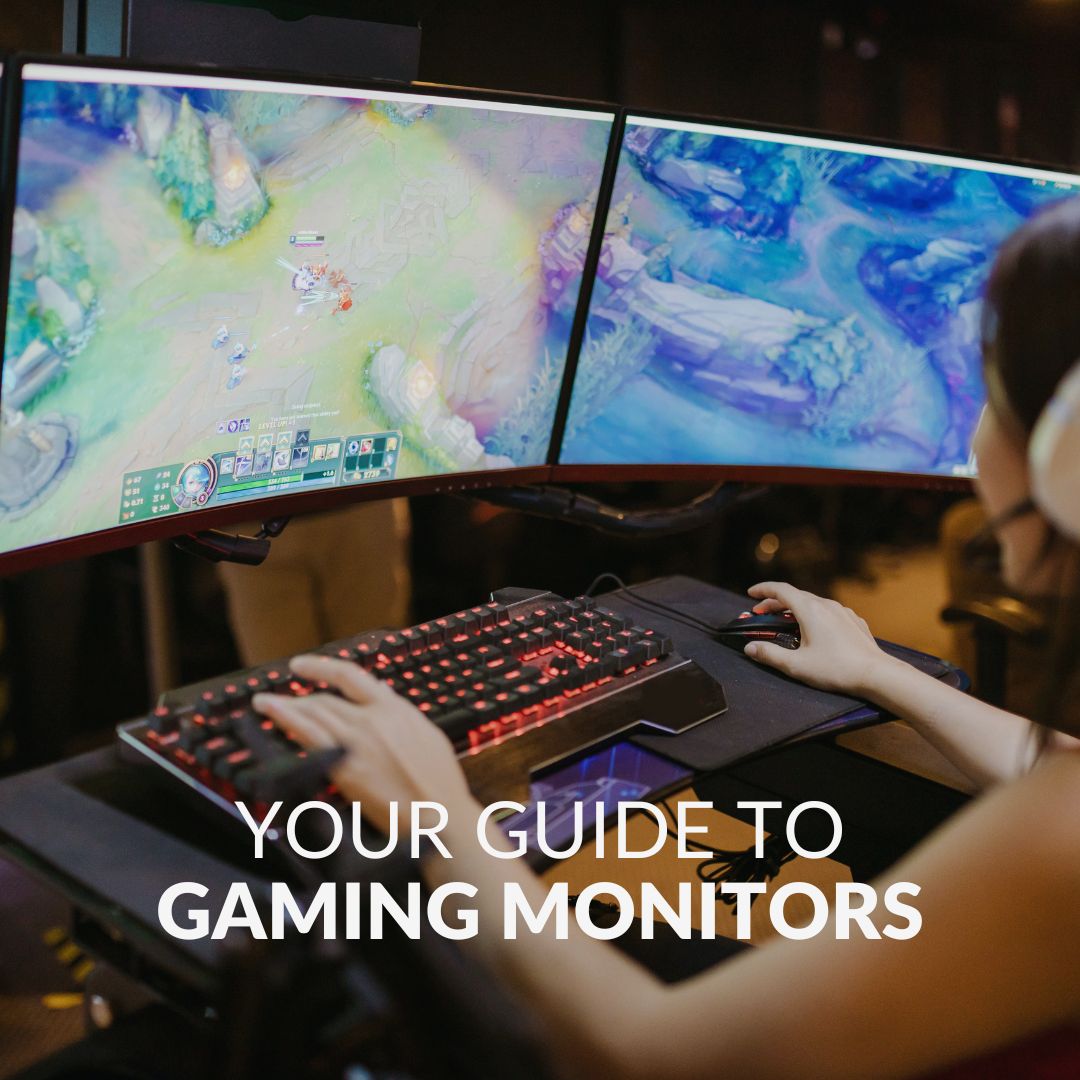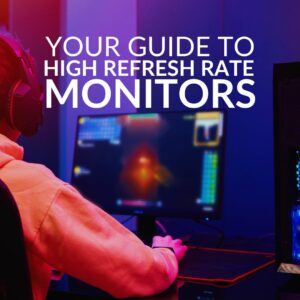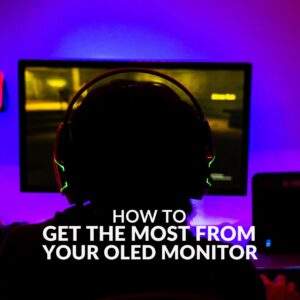USB-C gaming monitors have rapidly grown in popularity, with more people upgrading to this standard from traditional HDMI or DisplayPort monitors. If you’re in the market for a new monitor, a USB-C is a great choice for gamers, streamers, and creative professionals, alike.
In this blog post, we’re taking a deep dive into USB-C gaming monitors, showcasing what they are, the pros and cons, why you want them for gaming, and much more! Grab a cuppa as we’re in it for the long haul.

What is a USB-C Gaming Monitor?
A USB-C monitor is exactly as it sounds – it’s a monitor that features a dedicated USB-C connector for both power and video. This allows you to seamlessly connect a variety of compatible devices such as PCs, laptops, mobile phones, and tablets directly to your monitor.

USB-C Specification
- Type-C connector
- 20Gbps max data transfer rate
- 2160p at 60FPS max resolution
- HDR 10 support
Pros and Cons of USB-C Gaming Monitors
Pros
- Compatible with a wide range of devices such as PCs, laptops, and mobile phones.
- Can take advantage of fast transfer speeds. With a USB-C monitor, you can easily transfer any data, images, videos, and more at lightning fast rates.
- Requires just a singular USB cable. You don’t need a cluster of multiple complicated cables. A USB-C monitor only requires one cable to connect any devices and provide power.
- Supports high-resolution images and videos. USB-C monitors can support up to 4K at 60 FPS!
- Serve as a USB Hub. Some USB-C monitors feature multiple ports, meaning you can utilise your monitor as a hub to connect all your various USB devices, minimising on cable clutter.
Cons
- Not compatible with certain older generations of hardware.
- Not all USB-C ports are the same! USB-C doesn’t have a specific industry standard, meaning manufacturers may create cables that only work alongside USB 2.0 or 3.0.
- Limitations to power delivery. You may find that you can’t simultaneously charge your laptop whilst you are using it connected to the monitor.
- Not as widely accessible as other connectivity options such as HDMI and DisplayPort.
- Typically more expensive than standard monitors with HDMI or DisplayPort.

Is a USB-C Gaming Monitor Good for Gaming?
USB-C monitors can be hugely beneficial for gamers as they boast several unique features which are sure to prove advantageous in the heat of battle.
Supporting high-resolutions and refresh rates, you’ll be at the centre of the gaming action, capable of seeing every second of gameplay as and when it happens in glorious detail. What’s more, with many models boasting active frame rate control, you won’t need to worry about display stutter or FPS drop interrupting your online adventures.
Whilst you enjoy your extended gaming marathons, your USB-C monitor will quickly supply your connected devices with charge. This means you can game, create, stream, all whilst charging your mobile phone! Plus, thanks to compatibility with a wide range of devices, you can connect virtually any secondary accessory from laptops to tablets.
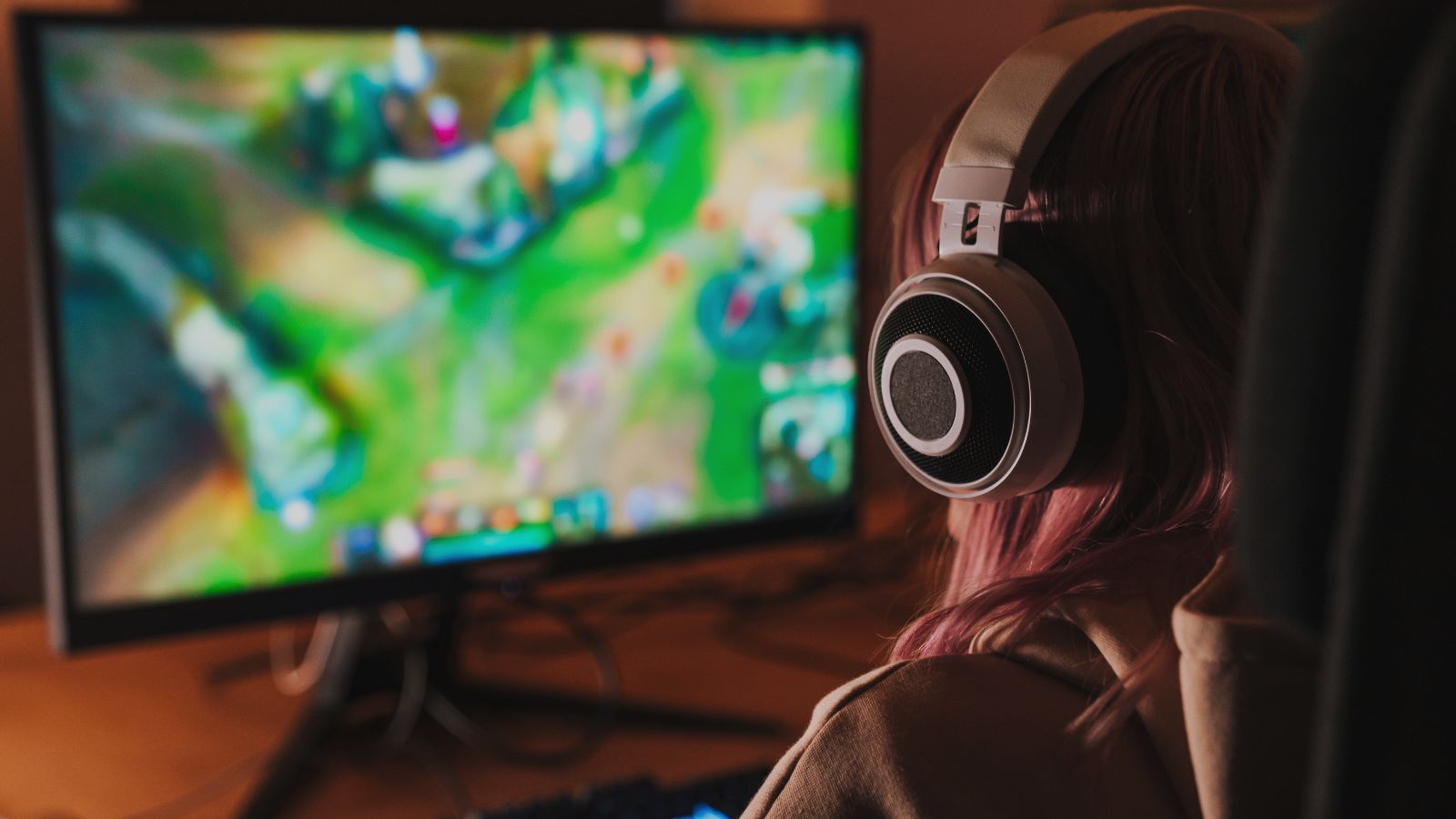
By supplying both power and video through one singular cable, a USB-C gaming monitor can notably help to free up space and clear your desk of any unwanted cables. Clutter and tangled wires will be a thing of the past, meaning you can create the ultimate aesthetically pleasing battle station, that is sure to be the envy of your friends.
USB-C vs HDMI vs DisplayPort – Is One Better?
USB-C vs HDMI vs DisplayPort – how do you keep on top of all these different connectivity options, and which one is right for you?
HDMI
HDMI is arguably the most popular standard, supported by nearly every monitor and TV. HDMI is a perfect choice for both gamers and professionals, capable of transferring high-definition videos and clear audio. Boasting plenty of must-have features such as VRR (variable refresh rate), resolutions of up to 4K, and maximum bandwidths of 14.4Gbps, you’ll have everything you need to dominate your in-game enemies.
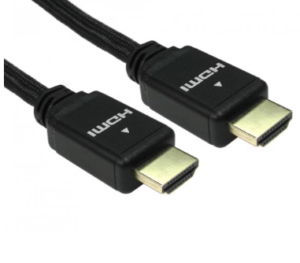
DisplayPort
On the other hand, DisplayPort has been optimised for those who demand the best, looking to game, stream, or create at resolutions of 4K, 8K, or beyond. It has been fine-tuned for use with PCs, delivering stunning visuals, high refresh rates, and silky-smooth gameplay. With support for MST (Multi-Stream Transport) DisplayPort can be used to daisy chain multiple displays from a single output for a seamless multi-monitor set-up.

USB-C
Lastly, USB-C boasts incredible versatility, thanks to its wide compatibility with a range of popular devices. You can use a USB-C gaming monitor with virtually any device, supplying it with both power and video, from one cable. This eliminates the need for multiple cables and ports, reducing any unwanted clutter from taking up precious desk space. Giving you more room for activities!
So… Which is Better?
We love playing devil’s advocate and we’re going to do it again here! Ultimately, the answer is… whichever suits your set-up best!
Each method offers you a unique set of advantages from high bandwidth rates, to support for 4K resolutions, and compatibility with a wide range of devices. Therefore, which you choose all depends on your own individual preferences and in-game demands.
If you want to enjoy high-definition visuals, fast bandwidth, and connectivity with a huge selection of devices, including TVs, HDMI is your best pick. However, if silky-smooth gameplay at incredible 4K or even 8K resolutions is what you desire, then choose DisplayPort. Alternatively, if you’re looking to use and charge your devices simultaneously, whilst freeing up important desk space, then USB-C is the perfect choice.
If all this talk about connectivity, HDMI, and DisplayPort has rattled your brain cells, you can find a selection of dedicated blog articles that will guide you through your options even further.
Ready to Upgrade to USB-C?
Have we tempted you? Are you now ready to upgrade to a USB-C gaming monitor? If so, here at Overclockers UK, we have plenty of premium compatible monitors with your name on.
We’ve showcased a select few below, but if these monitors aren’t your number one pick, you can browse our full selection of USB-C compatible gaming monitors by clicking the relevant button.
MSI MAG 274QRF 27” Gaming Monitor
- 27” gaming monitor
- 2560 x 1440 display resolution
- 180Hz refresh rate
- Supports USB Type-C connectivity
- 1ms response time


Gigabyte M32U 32” Curved Gaming Monitor
- 32” gaming monitor
- VA panel type
- 3840 x 2160 resolution
- 144Hz refresh rate
- Compatible with USB Type-C connectivity
LG 34” 34WR55QC-B Ultrawide Curved Gaming Monitor
- 34’’ curved gaming monitor
- 3440 x 1440 resolution
- VA panel
- 100Hz
- Supports USB Type-C connectivity

In Need of More Monitor Advice?
Do You Have a USB-C Gaming Monitor?
Do you have a USB-C gaming monitor? How has it improved your performance or productivity? Let us know in the comments.



